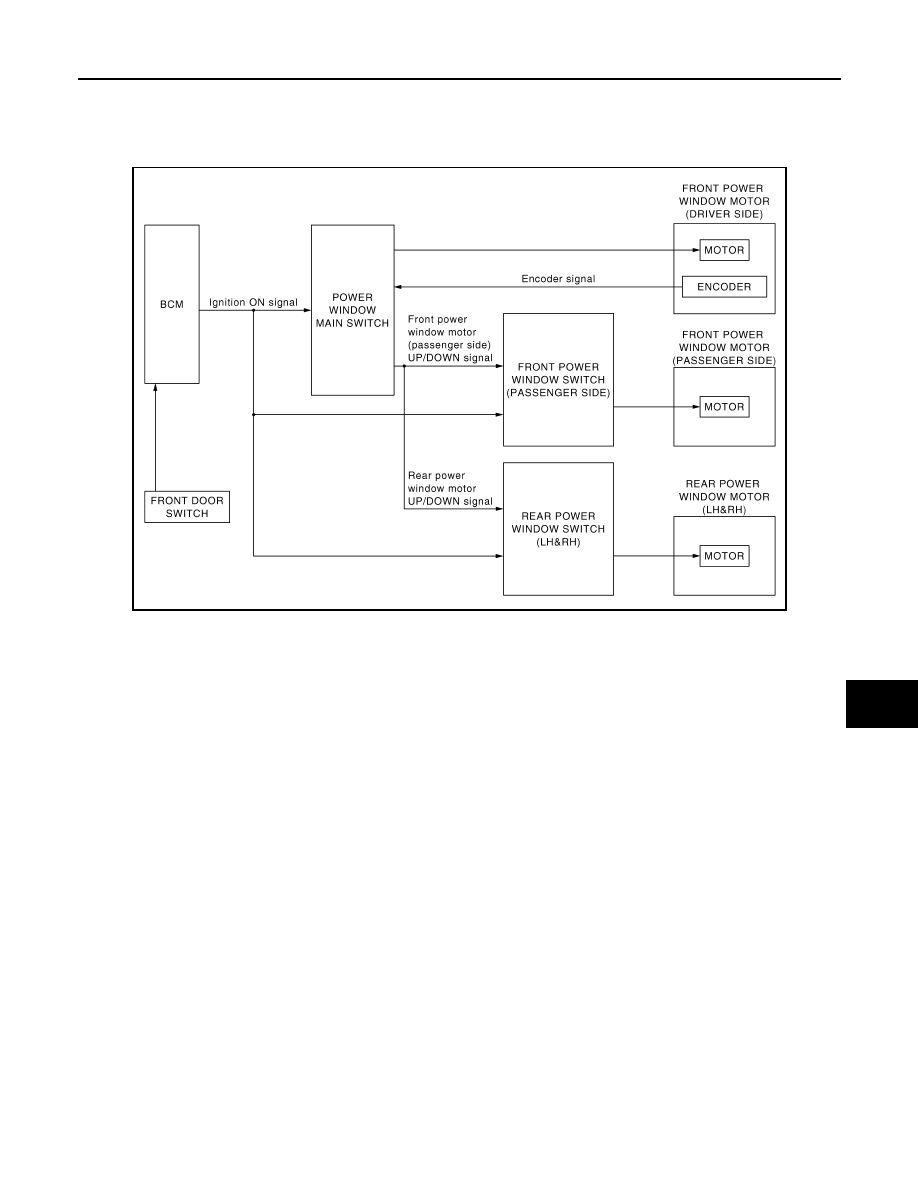Content .. 1062 1063 1064 1065 ..
Nissan Juke F15. Manual - part 1064

SYSTEM
PWC-9
< SYSTEM DESCRIPTION >
C
D
E
F
G
H
I
J
L
M
A
B
PWC
N
O
P
SYSTEM
POWER WINDOW SYSTEM
POWER WINDOW SYSTEM : System Diagram
INFOID:0000000012196897
POWER WINDOW SYSTEM : System Description
INFOID:0000000012196898
• Power window system is activated by power window switch when ignition switch turns ON, or during the
retained power operation after ignition switch turns OFF.
• Power window main switch opens/closes all door glass.
• Front and rear power window switch opens/closes the corresponding door glass.
• AUTO UP/DOWN operation can be performed when power window main switch turns to AUTO.
• Power window lock switch can lock all power windows other than driver seat.
• If door glass receives resistance that is the specified value or more while power window of driver seat is in
AUTO-UP operation, power window of driver seat operates in the reverse direction.
POWER WINDOW AUTO-OPERATION (FRONT DRIVER SIDE)
• AUTO UP/DOWN operation can be performed when power window main switch turns to AUTO.
• Encoder continues detecting the movement of power window motor and transmits to power window switch
as the encoder signal while power window motor is operating.
• Power window switch reads the changes of encoder signal and stops AUTO operation when door glass is at
fully opened/closed position.
• Power window motor is operable in case encoder is malfunctioning.
RETAINED POWER OPERATION
Retained power operation is an additional power supply function that enables power window system to oper-
ate for 45 seconds even when ignition switch is turned OFF.
Retained Power Cancel Conditions
• Front door CLOSE (door switch OFF)
→ OPEN (door switch ON).
• When ignition switch is ON again.
• When timer time passes (45 seconds).
POWER WINDOW LOCK
JMKIB3472GB